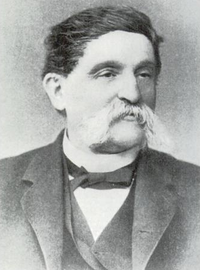This article needs additional citations for verification. (November 2022) |
Gridley J. F. Bryant | |
|---|---|
 Bryant in the 1850s | |
| Born | Gridley James Fox Bryant August 29, 1816 Scituate, Massachusetts, U.S. |
| Died | June 8, 1899 (aged 82) Boston, Massachusetts, U.S. |
| Nationality | American |
| Other names | Gridley J. F. Bryant |
| Occupation | Architect |
| Parent(s) | Gridley Bryant (father) Maria Winship Fox (mother) |
| Buildings | Massachusetts State House Boston Old City Hall Gloucester (Mass.) City Hall Ballou Hall, Tufts University Hathorn Hall, Bates College |
Gridley James Fox Bryant (August 29, 1816 – June 8, 1899), often referred to as G. J. F. Bryant, was a Boston architect, builder, and industrial engineer whose designs "dominated the profession of architecture in [Boston] and New England." One of the most influential architects in New England, he designed custom-made houses, government buildings, churches, schoolhouses, and private residences across the United States, and was popular among the Boston elite. His most notable designs are foundational buildings on numerous campuses across the northeastern United States, including Tufts College, Bates College, and Harvard College.[1] One of the pioneers of modern architecture in America, he received the most commissions in New England during the height of his career. He is also the most commissioned architect in Boston history.
A native of Massachusetts, his early life was heavily influenced by his father's work in construction engineering. His father, Gridley Bryant, built the Granite Railway, the first publicly chartered railway in the U.S. The younger Bryant received no formal training in architecture but taught himself industrial engineering and construction analysis as well as building design. Bryant's first informal mentor was Alexander Parris, who introduced him to neoclassical design and Second Empire architectural templates. His self-started firm, Bryant & Associates, was one of the most selective and popular architectural firms in New England. Bryant designed institutions providing high personal or societal value, or when sufficient payment was made to him personally, oftentimes described as "ludicrously expensive". He was the first architect to be featured on London's The Builder. [citation needed] A record three of his designs were featured. Such publicity propelled him into the public eye and earned him expensive and large commissions.
- ^ James F. O'Gorman, On the Boards: Drawings by Nineteenth-Century Boston Architects (Univ. of Penn. Press, 2004), p.57.